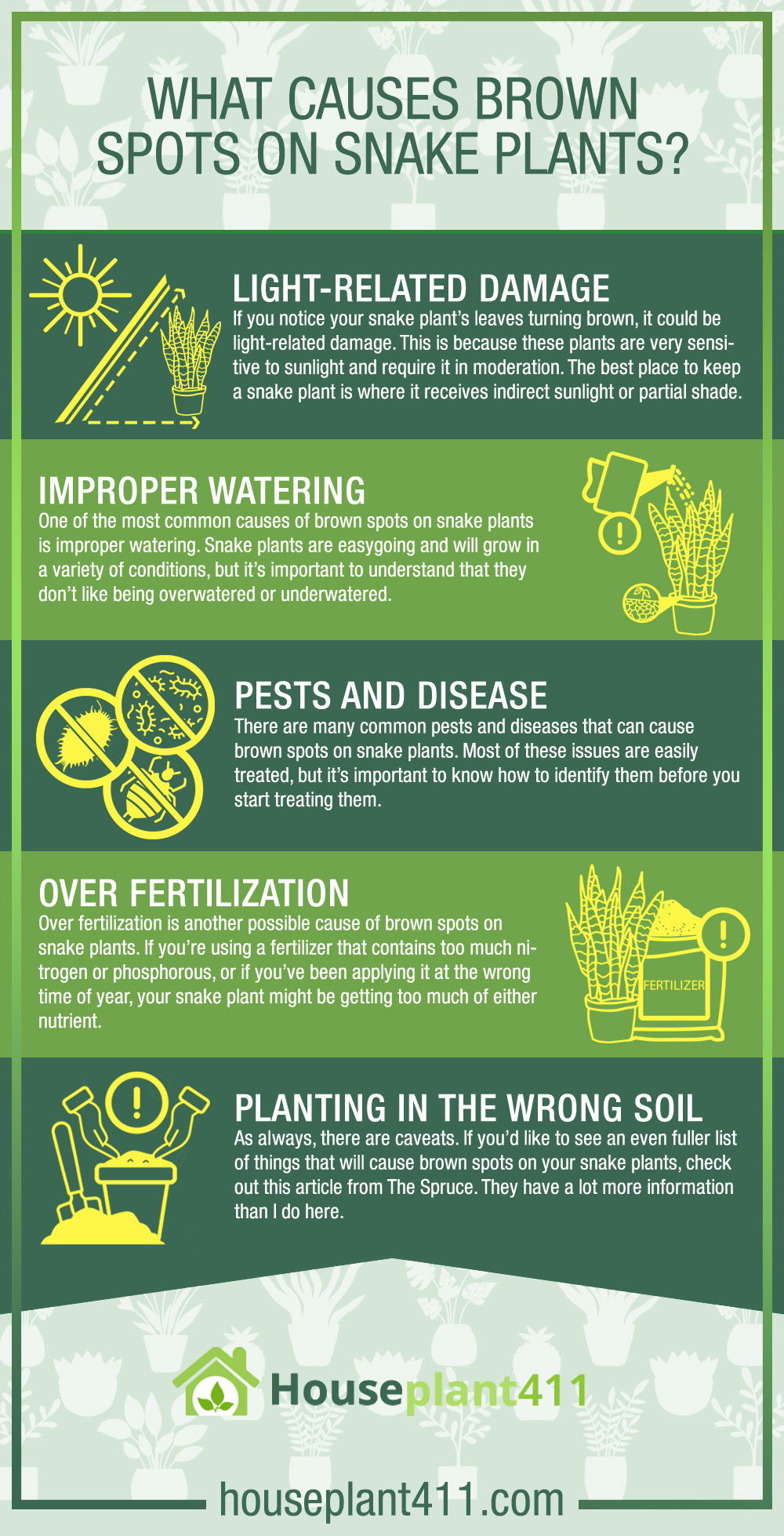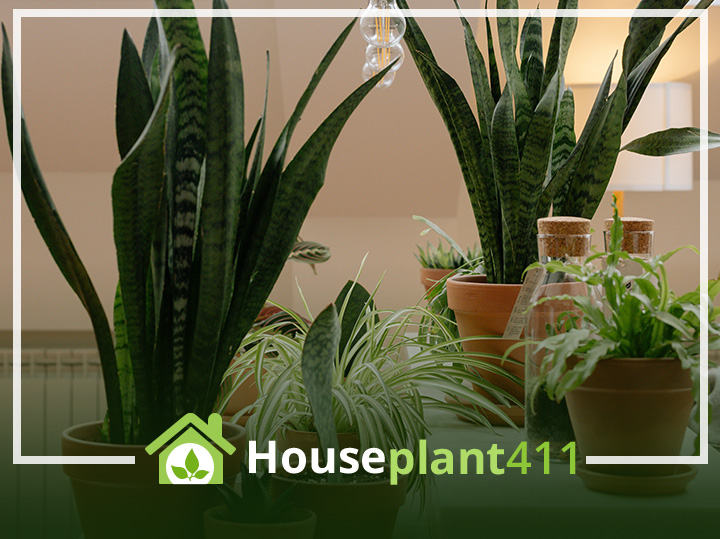Snake plants (Sansevieria) are one of the most popular houseplants and for a good reason. They’re easy to care for, don’t need much sunlight, and look elegant in any home. But if your snake plant’s leaves are browning or turning yellow, that’s not a good sign. You may be wondering what causes brown spots on snake plants and how to prevent them from happening again. Here are some possible reasons why your Sansevieria may be losing its luster:
Light-Related Damage.
If you notice your snake plant’s leaves turning brown, it could be light-related damage. This is because these plants are very sensitive to sunlight and require it in moderation. The best place to keep a snake plant is where it receives indirect sunlight or partial shade. If the plant is placed in full sunlight, its leaves will begin to bleach out and turn brown due to excessive heat exposure.
If you see signs of this type of damage on your snake plant, consider moving it to a different location where it will receive more filtered light and reduce the likelihood of further damage occurring.
Improper Watering.
One of the most common causes of brown spots on snake plants is improper watering. Snake plants are easygoing and will grow in a variety of conditions, but it’s important to understand that they don’t like being overwatered or underwatered. The roots should be allowed to dry out between waterings, which means you should wait until the soil is almost dry before watering again.
You should thoroughly water your snake plant during its first few weeks in your home and then allow it to dry out completely between waterings. The good news is that this type of care only needs to be followed for three months or so—after that, you can start a regular schedule where you water once every two weeks (and never more than once per week).
Pests And Disease.
There are many common pests and diseases that can cause brown spots on snake plants. Most of these issues are easily treated, but it’s important to know how to identify them before you start treating them.
Here are some examples:
- Mealybugs: These pests look like white cottony masses on the leaves, stems, and rhizomes of your plant. To treat mealybugs, wipe them off with a cloth dipped in alcohol or soap water; be sure that you don’t get any solution on the leaf surfaces themselves—if they’re too wet, they’ll likely rot! It’s also a good idea to spray infested areas with insecticidal soaps every few weeks until all signs are gone.
- Scale Insects: Scale insects appear as small bumps on your snake plant leaves; they can be difficult to remove without damaging your plant’s leaves! Fortunately, there are lots of products available at garden centers (or online) that will kill these annoying creatures when applied according to package directions.
- Aphids: Aphids create little round clusters of greenish-white or blackish bugs that feed on sap from new growth; their excrement causes yellowing leaves with sticky deposits around the infestation site.
- Fungus Gnats: These tiny flies lay their eggs in moist soil; once hatched into larvae stage (which resemble tiny maggots), adult fungus gnats emerge from soil as well as from decaying organic matter such as dead plants and animal feces where they live out their days eating algae and fungi found within tank walls before dying off after mating if not eaten by fish.
- Powdery Mildew Fungus spores, which spread by wind currents carrying fungal particles throughout gardens during hot summer months, causing infection upon contact between susceptible
Over Fertilization
Over fertilization is another possible cause of brown spots on snake plants. If you’re using a fertilizer that contains too much nitrogen or phosphorous, or if you’ve been applying it at the wrong time of year, your snake plant might be getting too much of either nutrient.
A plant that gets too much nitrogen can die because its stems turn brown, and it produces new leaves more slowly than normal. The yellowing begins in older leaves and eventually works up the stem to include all parts of the plant except its roots. Over fertilization can also cause chlorosis in snake plants: dark green spots on leaves are are caused by a lack of nutrients like magnesium and calcium necessary for photosynthesis (how plants turn light into energy).
Excess fertilization by itself won’t cause wilting; however, over-fertilizing combined with other factors may lead to this symptom as well as growth spurts from increased levels of nitrogen in certain species.
Planting In the Wrong Soil.
You’re going to be planting this snake plant in the wrong soil.
As always, there are caveats. If you’d like to see an even fuller list of things that will cause brown spots on your snake plants, check out this article from The Spruce. They have a lot more information than I do here. But let’s look at things that apply specifically to our little ferny friends:
- Soil should be well-drained. If the drainage is poor or if the soil is too soggy for too long, then roots can rot and kill off your plant. This can happen when you water too much — but it can also happen if you don’t water enough (especially if it’s winter).
- Soil should not be too rich, acidic, or alkaline (that last one might sound familiar). Rich soils tend to encourage root rot more often than not, while acidic ones will cause leaves to be yellow and die off one by one until they fall off completely — which means that brown spots could appear in clusters around those areas where foliage used to be!

Conclusion
To avoid brown spots, you should make sure to give the Snake Plant enough light and water. If your plant does get brown spots, try treating it with some fungicide or repotting in fresh soil.

